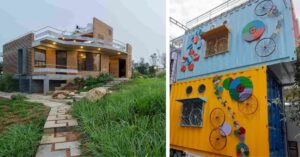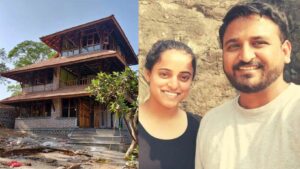This Gujarat Couple Builds Energy-Saving Eco-Spaces With Traditional Materials!
While building an organic store in Ahmedabad, Snehal and Bhadri Suthar used a cow dung and hay mix as the main construction material. The flooring was recycled wood and the lighting was eco-friendly LEDs!

Using locally-sourced recycled construction materials is the USP of Ahmedabad-based couple – architect Snehal and interior designer Bhadri Suthar. For them, sustainability is a way of life which is reflected in the way the duo designs buildings.
Nature, ancient structures and traditional construction techniques are our inspiration and our respective childhood experiences have played an influential role in moulding our professional ethos, Bhadri tells The Better India (TBI).
Bhadri’s most favourite part of childhood was visiting famous heritage spots in Ahmedabad. She would be mesmerised every time she looked at the intricate carvings of Jama Masjid, the carved jaalis (perforated surfaces) of Sidi Sayyed ki Jali or the decorated vavs (step wells) of Dada Hari Ni Vav that resonate with ancient water conservation methods.
Make your home sustainable at affordable rates. Check out a set of eco-friendly, innovative accessories for your home and kitchen here.
“I was barely six when I first tried to decode the designs of the site by drawing a monument at home. In a way, the city’s heritage kindled my love for architecture,” she says.
Meanwhile, Snehal’s dad was an architect and their family owned a carpentry workshop, “I grew up surrounded by construction materials and those became my toys. Taking up architectural studies was a natural choice for me. I couldn’t see myself working in any other field,” shares Snehal.
While Snehal did his Masters in Sustainability from the San Francisco Institute of Architecture, Bhadri completed her Diploma in Interior Design from Arvindbhai Patel Institute of Architecture in Vidyanagar, Gujarat.
In 2002, the duo founded The Grid, an Ahmedabad-based architectural firm that uses recycled or local materials to build green spaces.
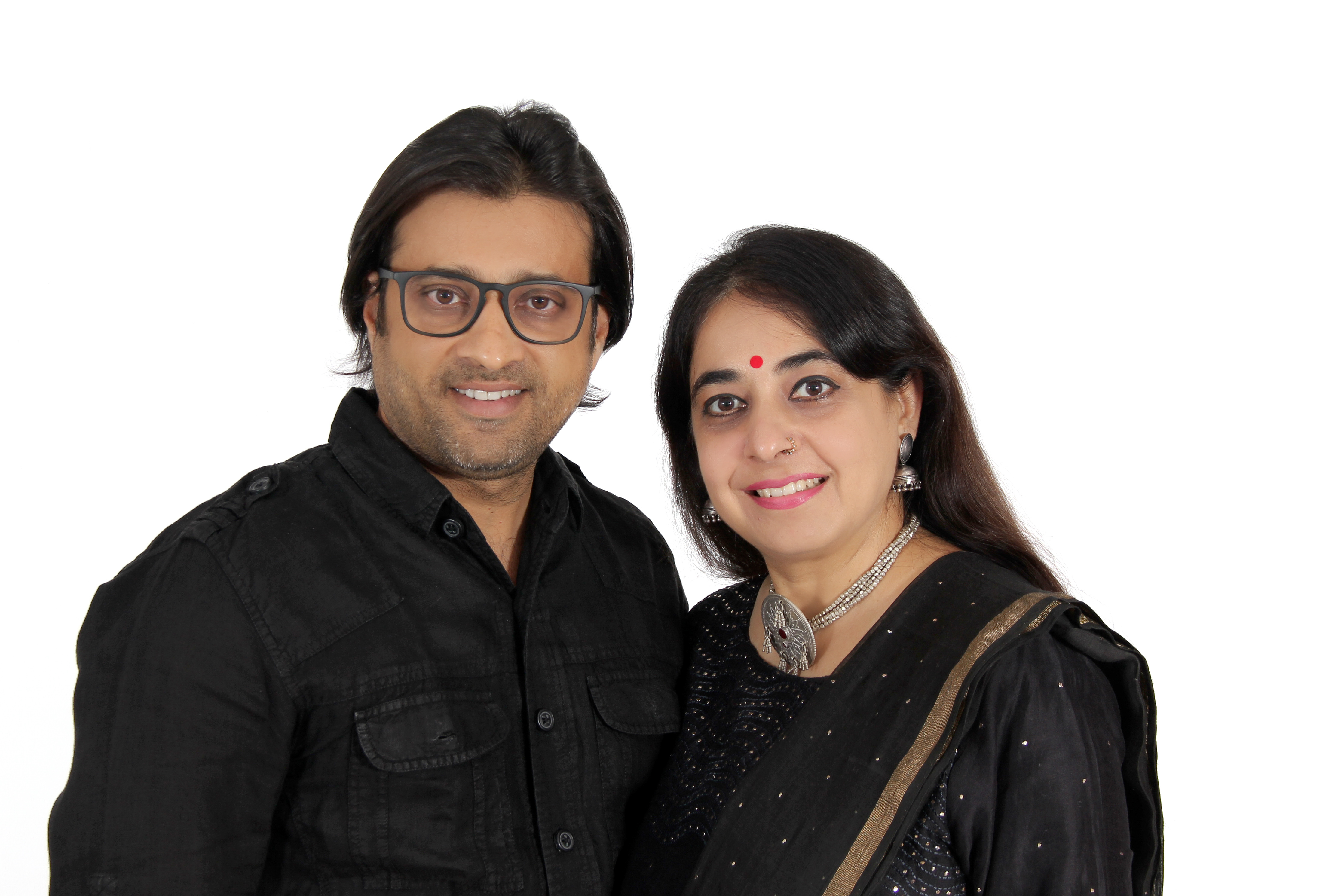
We use regional and recycled materials in place of virgin resources. We make sure that the overall construction material is produced, manufactured or quarried within 400 kilometres of the site so that it reduces the carbon footprint associated with shipping of construction materials, explains Bhadri.
The couple designs each project in a way that utilises maximum natural light and breeze reducing energy usage.
The comparison between a green building and a conventional one gives the notion that green building is expensive. But that is not true. If the building materials are selected systemically, it not only reduces cost but also reduces the environmental impact of extraction, transportation and installation. Green materials also enhance the indoor air quality as they are non-toxic and have minimal chemical emissions, adds Bhadri.
Here’s A Look At Three Sustainable Projects By The Grid
1) Organic Store
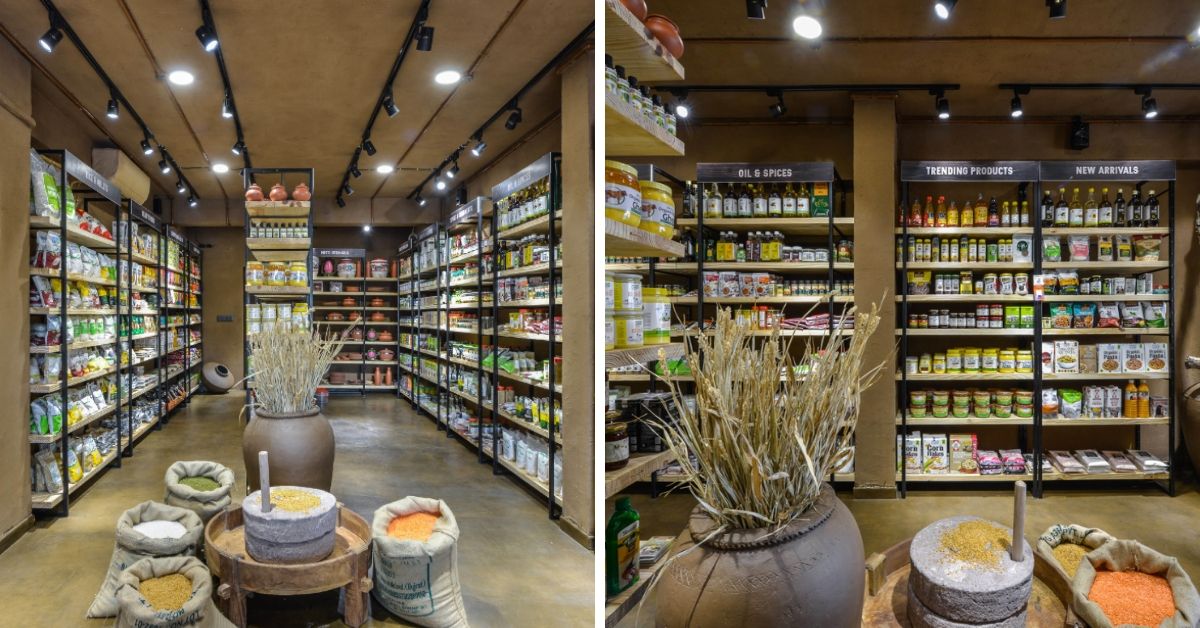
When the duo got the project of an organic store in city, the instructions were clear –build a store that reflect the all-organic essence of the store. Since the client was a farmer-turned-entrepreneur, the Suthars delved upon the options that are used and found in a farm.
Adopting the three R’s – Reduce, Reuse and Recycle, the duo used a mix of cow dung and hay as the main construction material. The flooring is recycled wood and the store is lighted with energy-friendly LEDs.
“Cow dung is a natural insect repellent. It is also a good thermal insulator that can absorb the perfume of the incense sticks and retain it,” says Snehal.
2) Farmer’s Eco-Friendly Den
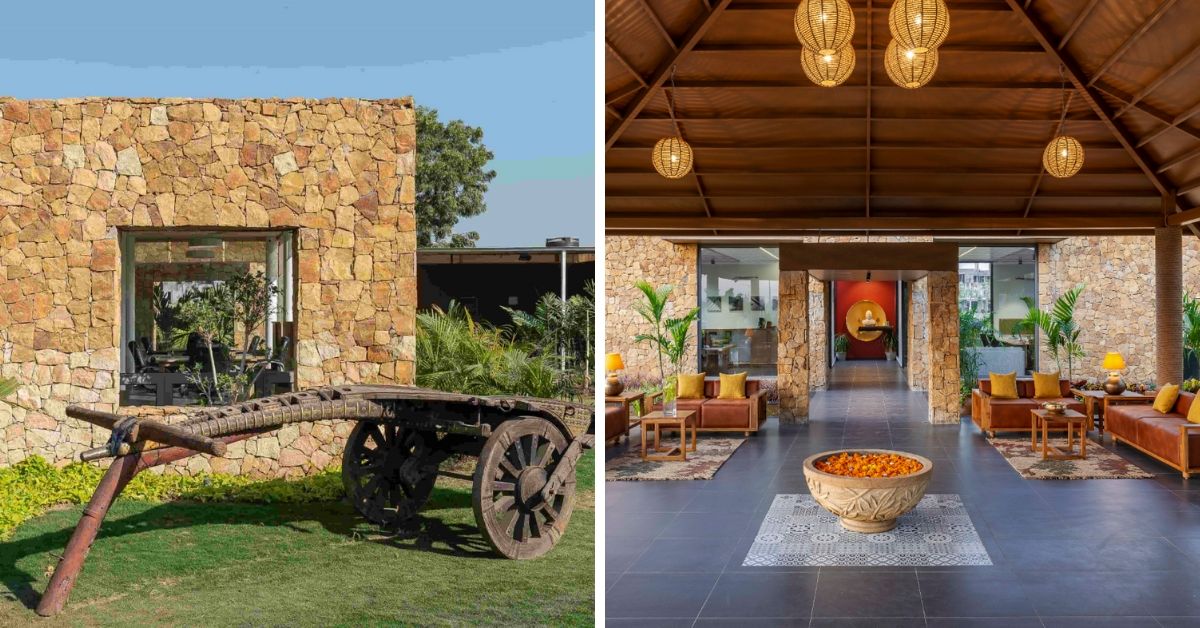
To replicate the atmosphere of a farm in their client’s office in Gandhinagar, the company used earthy, and natural materials. The foyer is laid with yellow sandstone bricks and the design allows natural light and air to enter the office during the day and the lanterns with a golden glow provide cosy and warm ambience at night. The trees are placed in southwest side of the office providing shade throughout the year. To add further to the aesthetics, the lawn boasts of a bullock cart and the workspace has clay pots and other accents.

The architectural layout was a simple grid-based plan and the building was slightly raised on a platform flowing into the surrounding landscape. The approach was to maintain the ethos of the traditional with a contemporary design, informs Snehal.
“The office has local species of trees and an artificial pond teeming with fish and turtles creating its own ecosystem,” he adds.
3) Terracotta Restaurant
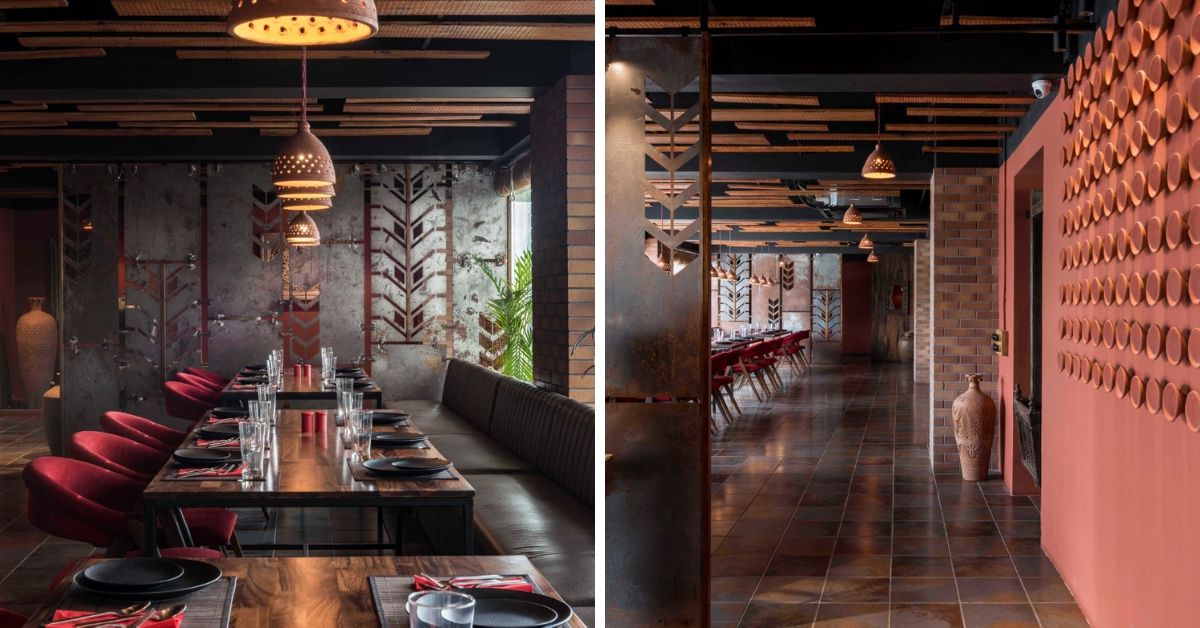
The couple designed the Terracotta Restaurant in Gandhinagar in clay and terracotta material and colour tones.
“Clay has texture and yet is so soft and malleable that it can be moulded to any form. It is used in daily life and yet has so much aesthetic value,” says Bhadhri.
We suggested the name ‘Terracotta Restaurant’ to our client explaining its significance in congruence with the materials chosen. We carefully selected recycled material palette and the overall feel of the space is seamless. she adds.
Again, the duo used local materials like raw bricks, clay, terracotta and raw wood to bring a rustic charm to the interiors. They used timber panels from recycled wood for the ceiling that covers ACs and electrical conduits.
The restaurant has two-millimetre-thick steel laser-cut screens as partitions giving a feel of the traditional designs of jaalis.

The old-fashioned frames on the wall and the jharokha (a recycled medieval door) that gives a glimpse of interiors is another way in which the couple has tried to pay tribute to bygone eras.
The duo used water-based, non-toxic and eco-friendly paints in the restaurant.
In their 17-year-old journey, the company has constructed ten eco-friendly buildings and received several awards including Gujarat’s First Platinum Certified Green Building for Urban Oasis – Posh in 2015.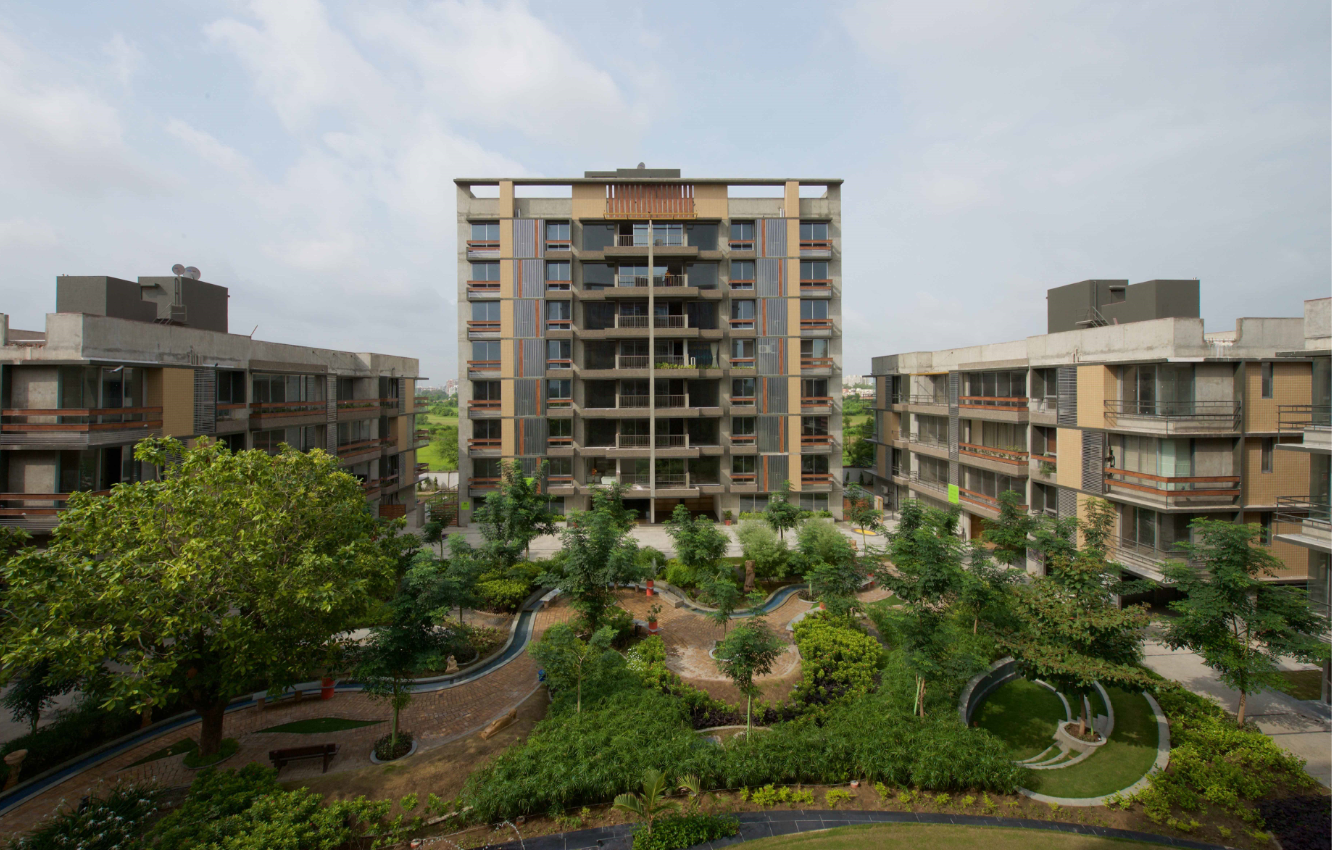
Besides, protecting the environment, Snehal and Bhadri hope to inspire fellow architects and designers.
“The use of green ensemble is a way of inspiring our fellow designers and tell them that our passion and creativity can make an ordinary material transform a space. This is our way to integrate sustainable and traditional architecture in the urban lifestyle. Initially one may feel that they have to make extra efforts to design a green building, space or interior but once the practice becomes your belief then it becomes a part of the natural process of designing,” concludes the duo.
Also Read: Jaalis, Baolis & More: Architect Couple Uses Ancient Designs to Make Sustainable Buildings!
(Edited by Saiqua Sultan)
Like this story? Or have something to share?
Write to us: [email protected]
Connect with us on Facebook and Twitter.
This story made me
- 97
- 121
- 89
- 167
Tell Us More
We bring stories straight from the heart of India, to inspire millions and create a wave of impact. Our positive movement is growing bigger everyday, and we would love for you to join it.
Please contribute whatever you can, every little penny helps our team in bringing you more stories that support dreams and spread hope.






